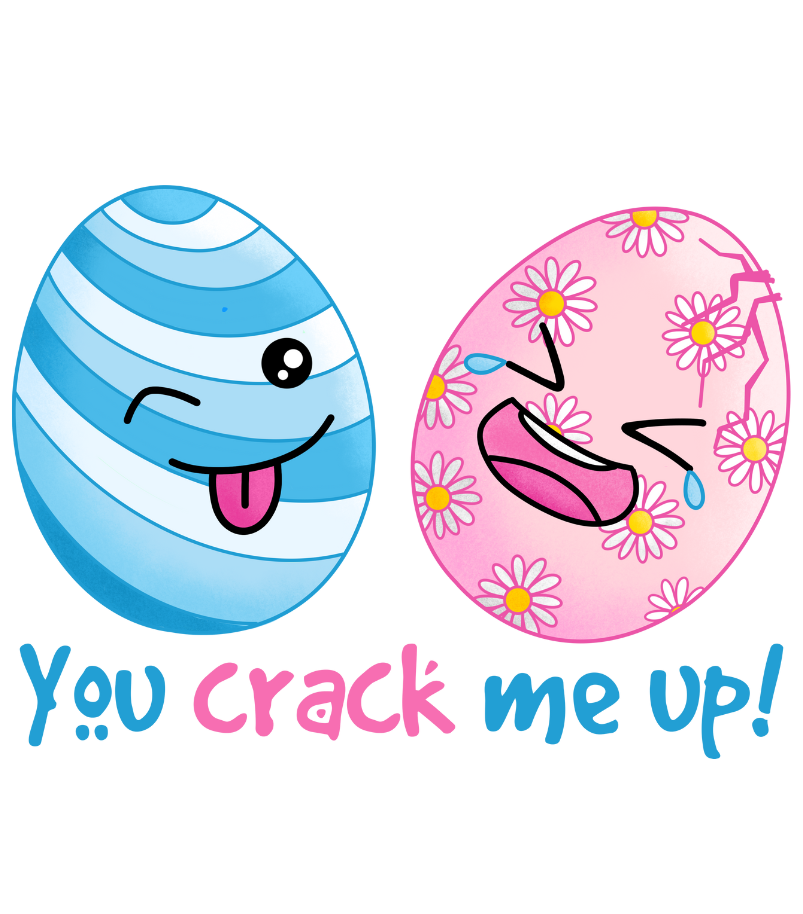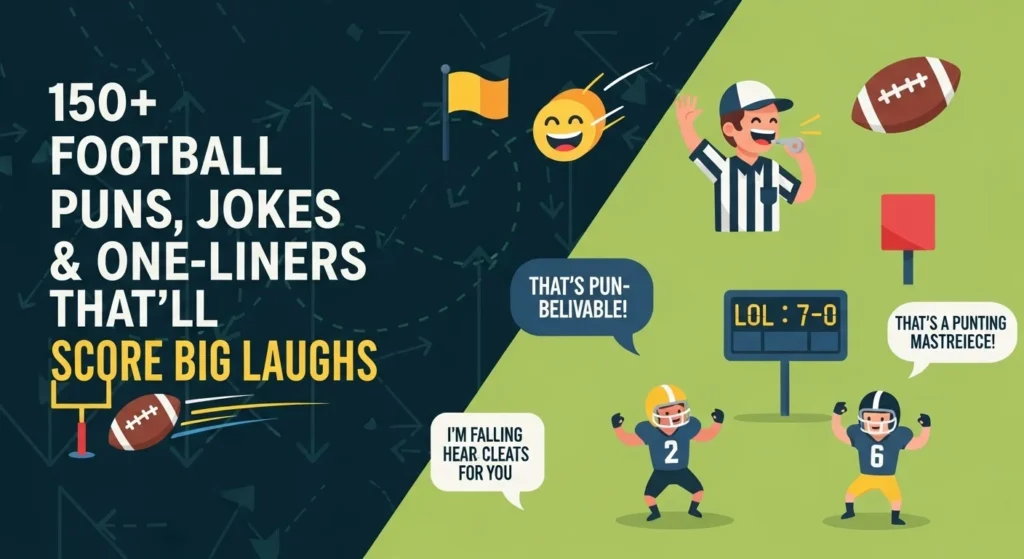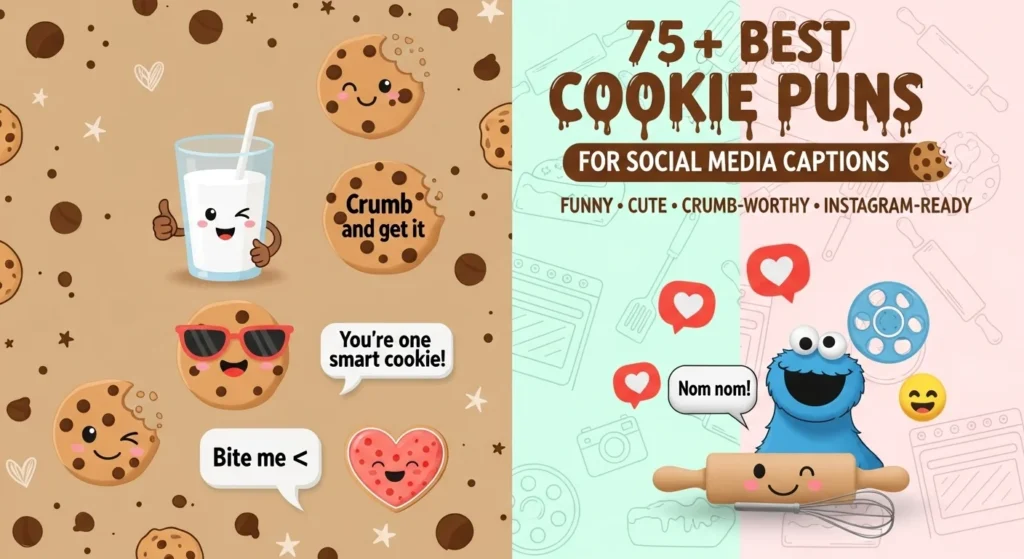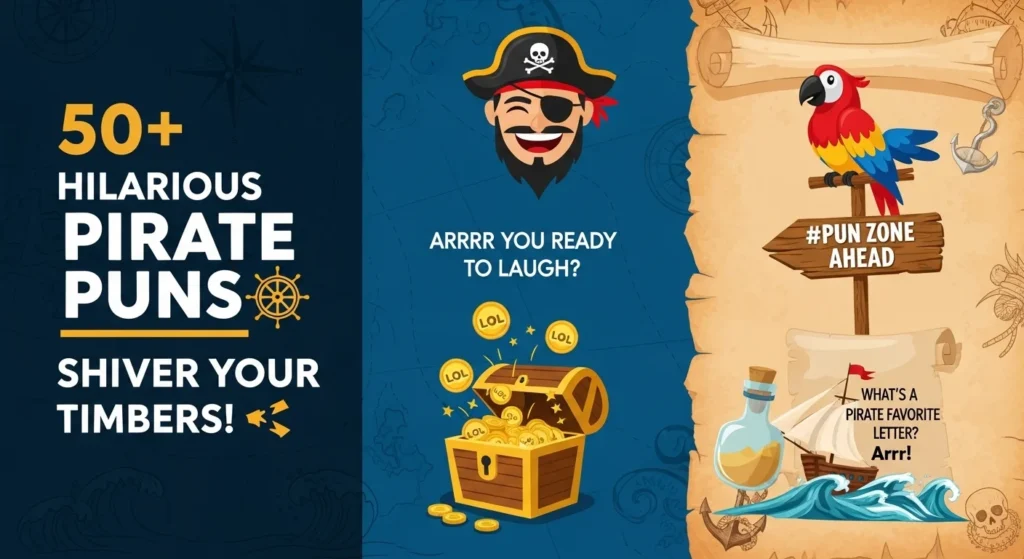#GetPuns
We Are Puns
Explore the Funny Puns and Jokes. Spice up Your Mood if you Read the Puns.


Subscribe to our Newsletter
Latest Updates On Newsletter.
Our Trusted Partners
Famous Puns Categories
Testimonials



The Power of Puns: Types, Examples, and Why Wordplay Wins Every Time
“I used to be a baker, but I couldn’t make enough dough.” If that statement made you smile (or groan), you’ve just experienced the peculiar power of a pun. Words that rise to the occasion of humor while simultaneously falling flat – that’s the paradoxical charm of puns, the most divisive form of comedy in our linguistic arsenal. These clever plays on words have been entertaining, educating, and occasionally exasperating audiences for centuries. From Shakespeare’s witty wordplay to your dad’s dinner table one-liners, puns continue to be an enduring form of verbal artistry that connects us through shared language and laughter.
What Are Puns?
A pun is a form of wordplay that exploits multiple meanings of a term, or replaces one word with a similar-sounding one for humorous or rhetorical effect. At its core, a pun creates an unexpected twist by deliberately confusing similar words or phrases.
Unlike other forms of humor that rely on physical comedy or complex setups, puns are purely linguistic. They work by creating a cognitive “short circuit” where your brain must quickly process two different meanings simultaneously. This mental double-take is what gives puns their distinctive quality.
Puns serve multiple purposes in our communication:
- They provide levity in conversation
- They demonstrate linguistic creativity and intelligence
- They help us remember information through memorable wordplay
- They create shared moments of recognition and connection
Whether they make you laugh out loud or roll your eyes dramatically, puns engage our minds in ways few other linguistic devices can manage.
Types of Puns
Not all puns are created equal. Understanding the different varieties can help you appreciate their complexity and potentially craft your own wordplay masterpieces.
Homophonic Puns
Homophonic puns rely on words that sound alike but have different meanings and spellings. These are among the most common types of puns.
Example: “Time flies like an arrow; fruit flies like a banana.”
Here, the phrase “flies like” first means “moves quickly as,” then switches to mean “fruit flies (the insects) enjoy.”
Example: “The wedding was so emotional that even the cake was in tiers.”
The word “tiers” sounds identical to “tears,” creating the dual meaning that plays on emotions and cake structure.
Homographic Puns
Homographic puns use words that are spelled the same but have different meanings and sometimes different pronunciations.
Example: “You can tune a piano, but you can’t tuna fish.”
Here, “tune a” and “tuna” are spelled differently but sound the same, creating the wordplay.
Example: “A boiled egg every morning is hard to beat.”
“Hard to beat” could refer both to the difficulty of surpassing the egg as a breakfast option and the literal action of beating a hardboiled egg.
Compound Puns
Compound puns combine multiple wordplays in the same joke, creating a layered effect that often requires more processing from the listener.
Example: “A bicycle can’t stand on its own because it’s two-tired.”
This combines the homophone “two-tired/too tired” with the fact that bicycles literally have two tires.
Example: “When the smog lifts in Los Angeles, UCLA.”
This plays on “UCLA” sounding like “you see LA,” which only happens when the smog clears.
Visual Puns
Visual puns extend beyond language into imagery, where a picture or design creates the wordplay. These are popular in advertising, memes, and graphic design.
Example: A sign for an optometrist that reads “Eye Care For You” with an eye symbol replacing the “I” in “Eye.”
Example: A coffee shop called “Déjà Brew,” featuring an image of two identical coffee cups.
Recursive Puns
Recursive puns require knowledge of another pun or cultural reference to understand the joke fully. They’re puns about puns, creating a meta-level of humor.
Example: “A pun is its own reword.”
This plays on the saying “a good deed is its own reward,” while self-referentially describing what puns do – they “reword” things.
Example: “Did you hear about the guy whose whole left side was cut off? He’s all right now.”
This works on multiple levels – he’s physically “all right” (only has his right side) and he’s doing better health-wise (“all right”).
Linguistic Specialties: Paronomasia, Antanaclasis, and More
For the word enthusiasts among us, there are technical terms for different pun styles:
Paronomasia is actually the formal term for punning, particularly when words similar in sound but different in meaning are used.
Example: “Why don’t scientists trust atoms? Because they make up everything.”
Antanaclasis involves repeating a word in different senses.
Example: “If you aren’t fired with enthusiasm, you will be fired with enthusiasm.” – Vince Lombardi
This repeats “fired” to mean both “motivated by” and “terminated from employment.”
Why Are Puns Funny?
Puns occupy a unique position in the comedy world – they can elicit genuine laughter or theatrical groans, but rarely indifference. So what makes them work psychologically?
The Incongruity Theory
According to linguists and psychologists, much of pun humor relies on the incongruity theory – the idea that humor emerges when we experience something that violates our expectations in a non-threatening way. Puns create a momentary cognitive dissonance as our brains process two competing meanings simultaneously.
“I’m reading a book about anti-gravity. It’s impossible to put down.”
Your brain first processes this as a statement about an engaging book, then quickly realizes the second meaning about the physics concept of gravity and “putting something down.”
The Resolution of Ambiguity
The human brain naturally works to resolve ambiguity. When we hear a pun, our minds race to untangle the multiple meanings, and the “aha” moment of resolution delivers a small neurological reward. This mental exercise is what makes puns intellectually engaging.
Social Bonding Through Shared Groans
Interestingly, even “bad” puns serve an important social function. The collective groan that often follows a particularly cheesy pun creates a shared moment of recognition and connection. This reaction, sometimes called “mock disappointment,” is actually a form of appreciation for the wordplay even while pretending to disapprove.
As language researcher John Pollack notes in his book “The Pun Also Rises,” puns “create a bond between the teller and the audience.”
The Cognitive Complexity
Puns engage multiple areas of the brain simultaneously, activating regions responsible for language processing, problem-solving, and social cognition. This mental workout is part of what makes them satisfying – your brain enjoys the challenge of decoding the dual meanings.
Best Examples of Puns
Ready for some pun-derful examples across different categories? Here’s a collection of some of the most clever, groan-worthy, and memorable puns to inspire your own wordplay adventures.
Food Puns
- I’m on a seafood diet. Every time I see food, I eat it.
- The pastry chef was feeling crusty after working a double shift.
- Becoming a vegetarian is a huge missed steak.
- I told my wife she was drawing her eyebrows too high. She looked surprised.
- What do you call cheese that isn’t yours? Nacho cheese!
Animal Puns
- What do you call a alligator detective? An investi-gator.
- Why don’t scientists trust atoms? Because they make up everything.
- The poor dog couldn’t find his bone because he didn’t know where to bark.
- What do you call a fish with no eyes? Fsh.
- A group of crows is called a murder—but just one is only attempted murder.
Holiday/Seasonal Puns
- What do you call a snowman with a six-pack? An abdominal snowman.
- I couldn’t figure out why the baseball kept getting bigger. Then it hit me.
- April showers bring May flowers. What do May flowers bring? Pilgrims.
- Why did the scarecrow win an award? Because he was outstanding in his field.
- Santa’s helpers are subordinate Clauses.
One-Liner Puns
- I wondered why the baseball was getting bigger. Then it hit me.
- The future, the present, and the past walked into a bar. Things got a little tense.
- Did you hear about the guy who invented Lifesavers? They say he made a mint.
- Velcro—what a rip-off!
- A backward poet writes inverse.
Kid-Friendly Puns
- What does a cloud wear under its raincoat? Thunderwear!
- What do you call a fake noodle? An impasta!
- Why did the bicycle fall over? Because it was two-tired!
- How do you organize a space party? You planet!
- What do you call a dinosaur that crashes his car? Tyrannosaurus wrecks!
Famous Puns in Literature and Pop Culture
Puns aren’t just for casual conversation—they’ve been used by literary masters and marketing geniuses throughout history.
Shakespeare: The Original Punster
William Shakespeare was arguably the greatest punster in literary history, using wordplay extensively throughout his works. In “Romeo and Juliet,” when the character Mercutio is fatally wounded, he declares, “Ask for me tomorrow, and you shall find me a grave man.” This pun works on multiple levels—he will literally be in a grave, and the word “grave” also means serious.
In “Much Ado About Nothing,” the title itself is a pun. In Shakespeare’s time, “nothing” was pronounced similarly to “noting,” which meant gossip or eavesdropping—major themes in the play.
Literary Puns Beyond Shakespeare
- James Joyce’s “Finnegans Wake” is perhaps the most pun-filled book ever written, with multilingual wordplay on nearly every page.
- Lewis Carroll’s “Alice’s Adventures in Wonderland” features numerous puns, including the famous Mock Turtle, who studied “Reeling and Writhing” (Reading and Writing).
- Oscar Wilde was renowned for his witty wordplay, famously stating, “Work is the curse of the drinking classes,” a pun on the phrase “drink is the curse of the working classes.”
Puns in Advertising
Marketers have long recognized the memorable quality of puns:
- Volkswagen’s “Drivers wanted” campaign
- Dairy Queen’s “DQ: Hot eats, cool treats”
- FedEx’s “When it absolutely, positively has to be there overnight” (playing on “absolute” and “positive”)
- Panda Express: “We wok hard”
Puns in Modern Media
Television shows like “The Simpsons,” “Bob’s Burgers,” and “BoJack Horseman” frequently use puns for humor. “Bob’s Burgers” even displays a new pun-based business name next door in its opening sequence of each episode (such as “Betty’s Machete’s” or “Knife to Meet You”).
Social media has also embraced pun culture, with entire accounts dedicated to specific categories of puns. Platforms like Reddit feature communities like r/puns where enthusiasts share their latest wordplay creations.
How to Write a Great Pun
Ready to try your hand at crafting your own puns? Here are some techniques to help you develop your punning prowess:
1. Start with Homophones
Make a list of words that sound alike but have different meanings (there/their/they’re, knight/night, flour/flower). Practice creating sentences that play on these similarities.
Tip: Dictionaries of homophones can be found online and are excellent resources for aspiring punsters.
2. Look for Words with Multiple Meanings
Many words in English have several definitions. “Bark” can refer to a dog’s vocalization or tree covering. “Light” can be about illumination, weight, or igniting something. These ambiguities are fertile ground for puns.
3. Use Context to Your Advantage
The best puns often rely on setting up a context that leads the listener in one direction before the punchline reveals the wordplay. For instance, telling a story about a restaurant before delivering a food-related pun enhances its impact.
4. Practice Word Association
Regularly exercise your brain by playing word association games. When you hear a word, try to think of all its potential meanings and similar-sounding words. This trains your mind to make the connections necessary for spontaneous punning.
5. Iterate and Refine
Don’t expect your first attempt at a pun to be perfect. Workshop your wordplay, try different variations, and test them on friends (who hopefully don’t mind a few groans).
Pun Formulas That Work
- The Definition Switch: “I used to be a baker, but I couldn’t make enough dough.”
- The Sound-Alike Replacement: “Time flies like an arrow; fruit flies like a banana.”
- The Double Meaning Play: “A boiled egg every morning is hard to beat.”
- The Visual/Verbal Combo: Writing “I ♥ NY” but replacing the heart with an apple for “I apple NY”
Conclusion
From ancient scrolls to Twitter threads, puns have persistently proven their power to provoke both pleasure and pain in their audience. These linguistic gymnastics exercise our minds, challenge our language processing, and create moments of shared recognition that few other forms of communication can match.
Whether you aspire to be a professional comedian, want to enliven your everyday conversations, or simply aim to make your children roll their eyes more efficiently, mastering the art of the pun offers rewards beyond mere wordplay. It sharpens your linguistic agility, enhances your awareness of language’s flexibility, and provides a socially acceptable way to express creativity in everyday situations.
So the next time someone groans at your carefully crafted pun, remember—you’re participating in a tradition that spans millennia of human communication. As the saying goes, “A day without wordplay is a day without sunshine.” Actually, I just made that up…but it was still a bright idea.
Now it’s your turn to play with words and discover the peculiar joy of making others simultaneously laugh and wince. After all, with great power comes great response-ability.
Recent Puns

101 Ocean Puns That’ll Make You Sea-Riously Laugh Out Loud 🌊

150+ Football Puns, Jokes & One-Liners That’ll Score Big Laughs

Holiday-Themed Cookie Puns to Sweeten Every Season 🍪✨

75+ Cookie Puns for Baking Enthusiasts That Are Baked to Perfection

75+ Best Cookie Puns for Social Media Captions


